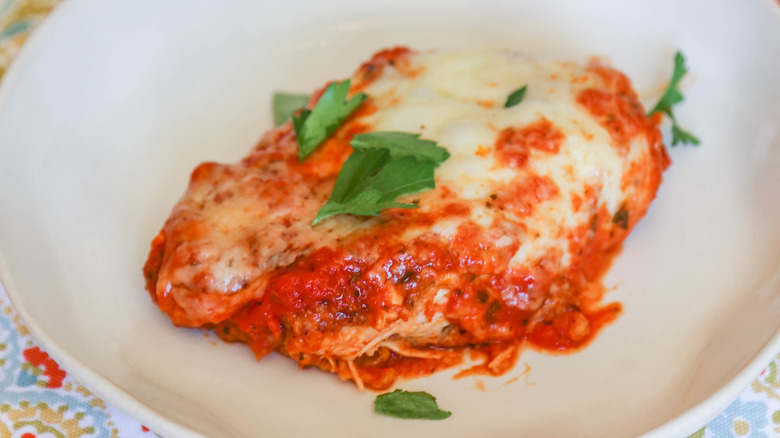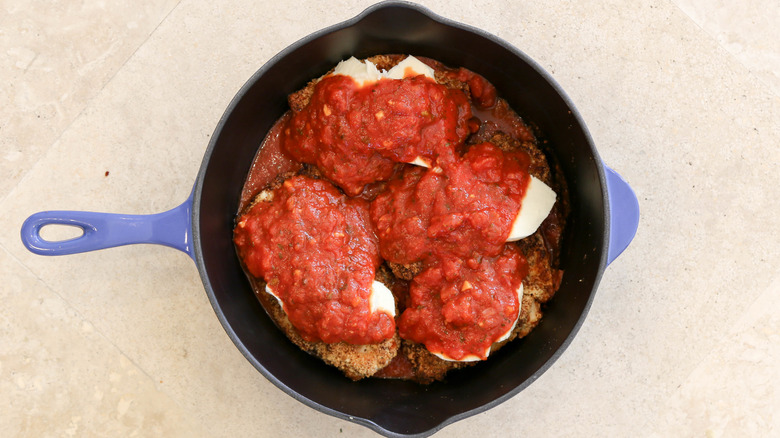Your Chicken Parmesan Deserves Quality Cheese
Chicken parmesan, while it might be a popular dish in Italian restaurants in the U.S., isn't the kind of thing you're going to find on restaurant menus in Italy unless they're specifically catering to American tastes (or, in a tongue-in-cheek way, to Italians who want to eat like their paesani Americani). Interestingly enough, the "parmesan" part of the name doesn't even come from the cheese, since it plays a secondary role to the mozzarella. Instead, the word "parmigiana" (later Anglicized to "parmesan") may have derived from words describing wicker wine bottles or roof slats, either or both referring in some way to the appearance of the dish.
While original chicken parmesan recipes may not have called for any cheese other than mozzarella, it's common to find them calling for the not-so-eponymous cheese today, and in this case, the linguistic mistake actually does make for a tasty addition. (Good thing the dish wasn't named after a soundalike for sardines or licorice.) Recipe developer Maren Epstein's chicken parmesan recipe, which she characterizes as something that " seems impressive even though it's easy to make," calls for quite a large amount of the stuff –- two cups in all, along with half a pound of mozzarella. With that much cheese, of course, you're going to want to make sure you're using your favorite brands of both. Quality is a very subjective measurement, so the very best cheese won't necessarily be the rarest or priciest, but rather, the one that you prefer.
You have multiple cheese choices here
With both mozzarella and parmesan, you have several different kinds from which to choose. Mozzarella may be found in grated, sliced, or block form, while fresh mozzarella in brine or trendy burrata balls might lurk in the gourmet section. The latter two won't be your best bet for this recipe as one's too wet and the other too mushy. Instead, low-moisture mozzarella is usually best for cooking. Epstein specifies that the mozzarella be sliced, so either pre-sliced or block form should work. However, if you have a go-to pre-shredded mozzarella, you go ahead and use it.
As for the parmesan, at the high end of the scale is Parmigiano Reggiano imported from Italy which is likely to be one of the most expensive types of parmesan cheese you can buy, and it's also not vegetarian. Not an issue when you're making chicken parmesan, perhaps (unless you've opted for plant-based "chicken") but still something to be mindful of. Domestic parmesans are available in chunk form, as well, in case your New Year's resolution was to make yourself grate again, but you can also buy them pre-grated. At the bottom end of the price spectrum is cardboard shaker parmesan. While food snobs proclaim themselves horrified by the stuff, there are those of us who love it, so if you're one of us, you may use it secure in the knowledge that your chicken parmesan will still be delicious to you. After all, that's what really counts.

